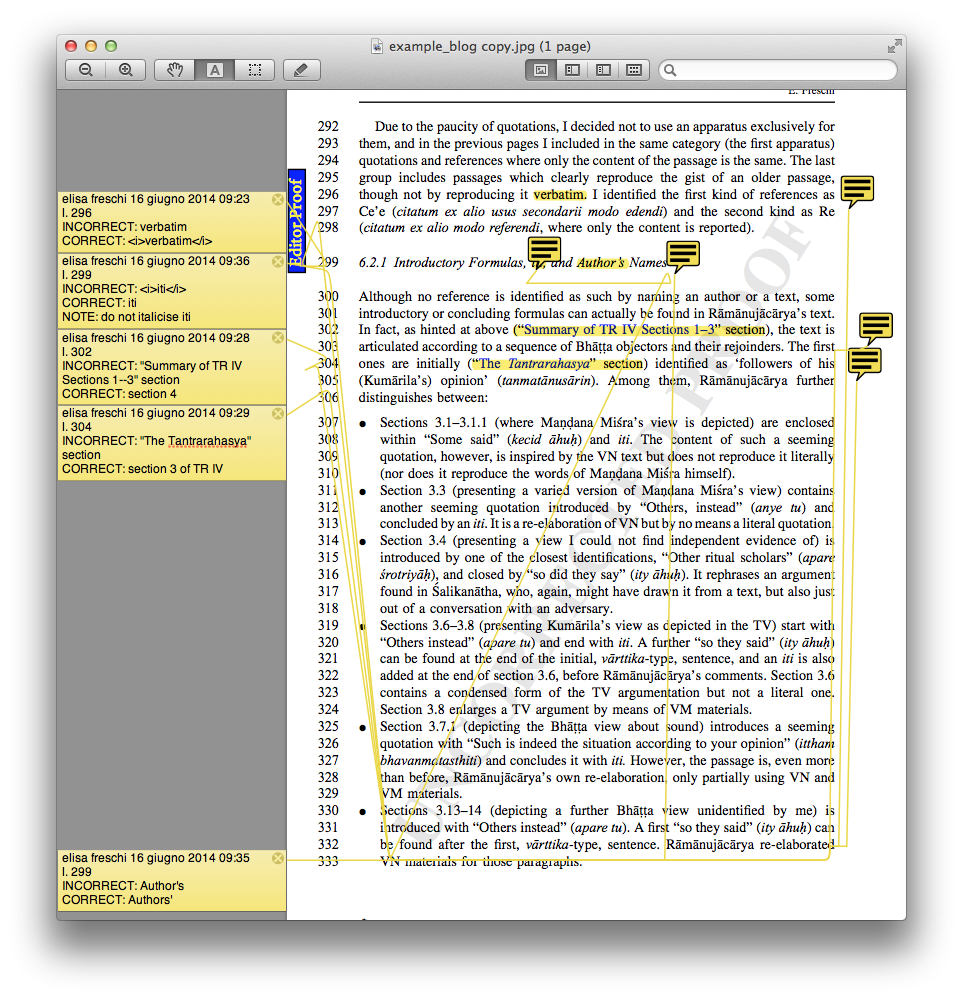I am still very busy with the corrections of the proofs of the volume I edited on textual reuse in Indian Philosophy (see here). This made me reflect on how to correct proofs.
Here is my way:
—I correct first of all on paper (I have still not understood why, but I note more mistakes on paper than on screen)
—I take time to correct the proofs. It is annoying, but far less than looking back at one’s printed article/book full of typos.
—I then report my corrections on the pdf with post-its. In this regard:
- Do not use too complicated devices, you never know whether the person who will insert the corrections has the last version of Adobe or Preview. I just use highlights and post-its.
- Do type in your corrections. You never know whether the person who will have to insert the corrections knows your language and writing and she will certainly not know the topic of your paper. Thus, assume that even a good hand-writing can lead to major problems. And you will probably not be able to check the proofs again…
- Do refer to the line number. Post-its are not a guarantee, as they can be visualised in a point slightly different than the point where you put it.
- For the same reason, I highlight the word(s) I want to be changed.
- Be clear about what you want to be done. I write, e.g., INCORRECT: it impossible. CORRECT: it is impossible. There is no such thing as too much precision when you need to explain what to do to someone who does not know the context (do not assume that just by reading the sentence it will be obvious that a subject or a verb was missing and needed to be added)
- Be clear about formatting elements and distinguish them from the words of the text. Do not write, e.g. “italicise it” or the person who will read it will not know whether she needs to italicise the word “it” or something else you might have referred to (typically, she will italicise the whole line). In some desperate cases, you might end up with a text in which “italicise” has been inserted. I agree with the journal/publishing house about conventional tags, e.g., <i> and </i> to indicate beginning and end of a passage which needs to be italicised. E.g., INCORRECT: <i>mantras</i> CORRECT: <i>mantra</i>s
Which strategies do you use?


Comments and discussions are welcome. Be sure you are making a point and contributing to the discussion.